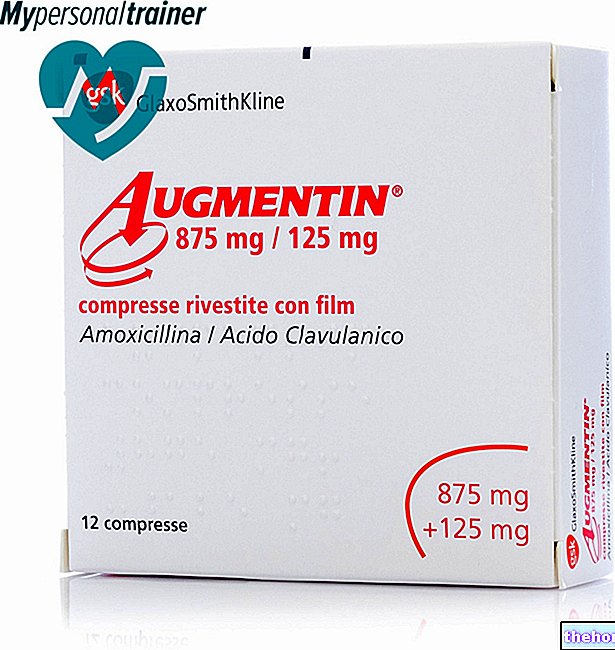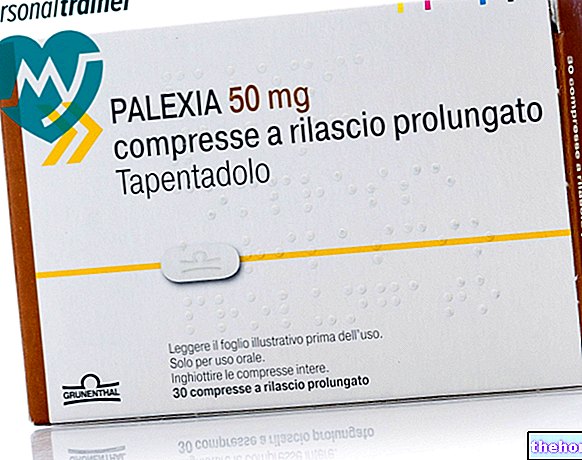Active ingredients: Azelaic acid
Skinoren 20% cream
Indications Why is Skinoren used? What is it for?
Skinoren is an anti-acne preparation for topical (on the skin) use.
Skinoren is used for the treatment of acne (acne vulgaris) in its various expressions characterized by the presence of comedones (blackheads), papules, pustules (pimples), small nodules.
Talk to your doctor if you do not feel better or if you feel worse after a short period of treatment.
Contraindications When Skinoren should not be used
Do not use Skinoren
- if you are allergic to azelaic acid or any of the other ingredients of this medicine (listed in section 6).
Precautions for use What you need to know before taking Skinoren
Talk to your doctor or pharmacist before using Skinoren.
The product is for skin application only.
Pay special attention to the use of this medicine:
- pregnant or breastfeeding (see "Pregnancy and breastfeeding" section);
- if you suffer from asthma, as worsening of asthma symptoms has rarely been reported in some patients who have been treated with azelaic acid
Avoid contact with eyes, mouth and mucous membranes. In case of accidental contact, wash affected parts with copious amounts of water. If eye irritation persists, consult your doctor.
Wash your hands after each application of Skinoren.
Limit the concomitant use of cosmetic preparations and alcoholic or aggressive detergents, dyes, astringent or abrasive substances or exfoliating agents that can worsen the acne picture. To choose the right products ask your doctor or pharmacist for advice.
If after a short period of treatment you do not notice appreciable results, please contact your doctor.
Also consult your doctor if these problems have occurred in the past.
Interactions Which drugs or foods can modify the effect of Skinoren
Tell your doctor or pharmacist if you are taking, have recently taken or might take any other medicines.
There are no known interactions and incompatibilities between Skinoren and other medicines.
Warnings It is important to know that:
Pregnancy and breastfeeding
If you are pregnant or breast-feeding, think you may be pregnant or are planning to have a baby, ask your doctor or pharmacist for advice before using this medicine.
Pay attention to the use of this medicine during pregnancy and breastfeeding.
It is not known whether azelaic acid is excreted in human milk in vivo.
Newborns should not come into contact with the skin or breasts treated with the product.
Skinoren contains benzoic acid and propylene glycol
This medicine contains benzoic acid which may be moderately irritating to the skin, eyes and mucous membranes and propylene glycol which may cause skin irritation.
Dose, Method and Time of Administration How to use Skinoren: Posology
Always use this medicine exactly as described in this leaflet or as directed by your doctor or pharmacist.
If in doubt, consult your doctor or pharmacist. Warning: do not exceed the indicated doses without medical advice.
Skinoren must be applied to the areas to be treated of the skin twice a day (morning and evening), rubbing gently to promote absorption, on the entire surface that has pimples or blackheads (approximately 2.5 cm of cream is sufficient to treat the " whole face).
Before applying Skinoren, wash your skin thoroughly with water and dry it. You can also use a mild skin cleanser.
It is important to use Skinoren regularly for the duration of the treatment. The duration of treatment with Skinoren may vary from patient to patient and according to the severity of the condition.
In patients with acne, a noticeable improvement is generally seen after about 4 weeks. For best results, use Skinoren continuously for several months.
In case of skin irritation, decrease the amount of cream for each application, or reduce the frequency of use of Skinoren to once a day until the irritation disappears. If necessary, stop the treatment for a few days.
Use in children and adolescents
Dosage changes are not anticipated for adolescents between the ages of 12 and 18 years.
The safety and efficacy of Skinoren in children under the age of 12 has not been proven.Overdose What to do if you have taken too much Skinoren
Given the very low toxicity of azelaic acid, both locally and systemically, intoxication is unlikely to occur.
In case of accidental ingestion / intake of an excessive dose of Skinoren, notify your doctor immediately or go to the nearest hospital.
If you have any further questions on the use of this medicine, ask your doctor or pharmacist.
Side Effects What are the side effects of Skinoren
Like all medicines, Skinoren can cause side effects, although not everybody gets them.
In the first days there may be sensations of irritated skin, itching, burning: in this case, it will be sufficient to stop the application for a day or two.
Very common side effects (may affect more than 1 in 10 people)
Systemic and application site disorders:
- burning,
- itch,
- erythema (redness).
Common side effects (may affect up to 1 in 10 people)
Systemic and application site disorders:
- ache,
- peeling,
- dryness,
- discoloration,
- irritation.
Uncommon side effects (may affect up to 1 in 100 people)
Skin and subcutaneous tissue disorders:
- seborrhea (oily skin),
- acne,
- skin depigmentation.
Systemic and application site disorders:
- tingling,
- dermatitis,
- nuisance,
- edema (buildup of fluid causing swelling).
Rare side effects (may affect up to 1 in 1,000 people)
Skin and subcutaneous tissue disorders:
- cheilitis (inflammation of the lips).
Immune system disorders:
- hypersensitivity to the medicine,
- worsening of asthma.
Systemic and application site disorders:
- rash,
- feeling of warmth,
- urticaria,
- eczema,
- ulcer. Generally, skin irritation symptoms subside over the course of treatment.
Additional side effects in children and adolescents
In adolescents aged 12-18 years, the tolerability of Skinoren was similar to that in adults.
Reporting of side effects
If you get any side effects, talk to your doctor or pharmacist. This includes any possible side effects not listed in this leaflet. You can also report side effects directly via the national reporting system at https://www.aifa.gov.it/content/segnalazioni-reazioni-avverse
By reporting side effects you can help provide more information on the safety of this medicine.
Expiry and Retention
Keep this medicine out of the sight and reach of children.
Do not use this medicine after the expiry date which is stated on the package. The expiry date refers to the last day of that month. The expiry date refers to the product in intact packaging, correctly stored.
Do not store above 25 ° C.
Do not throw any medicines via wastewater or household waste. Ask your pharmacist how to throw away medicines you no longer use. This will help protect the environment.
What Skinoren contains
- The active ingredient is azelaic acid. 1 g of Skinoren contains 200 mg (20%) of azelaic acid.
- The other components are: polyoxyethylene esters with fatty acids, cetyl stearyl octanoate, mixture of mono-diglycerides, esters of fatty alcohols, triglycerides and wax, glycerol 85%, propylene glycol, benzoic acid, purified water.
What Skinoren looks like and contents of the pack
Skinoren comes in the form of an opaque white cream.
The package is a tube containing 30 g.
Source Package Leaflet: AIFA (Italian Medicines Agency). Content published in January 2016. The information present may not be up-to-date.
To have access to the most up-to-date version, it is advisable to access the AIFA (Italian Medicines Agency) website. Disclaimer and useful information.
01.0 NAME OF THE MEDICINAL PRODUCT
SKINOREN 20% CREAM
02.0 QUALITATIVE AND QUANTITATIVE COMPOSITION
1 g of Skinoren cream contains 200 mg (20%) of azelaic acid.
Excipients with known effects: benzoic acid, propylene glycol.
For the full list of excipients, see section 6.1.
03.0 PHARMACEUTICAL FORM
Cream.
Opaque white cream.
04.0 CLINICAL INFORMATION
04.1 Therapeutic indications
Treatment of acne (acne vulgaris) in its various expressions characterized by the presence of comedones, papules, pustules, small nodules.
04.2 Posology and method of administration
Skinoren cream should be applied to the treatment areas of the skin twice a day (morning and evening) gently. (Approximately 2.5 cm of cream is sufficient to treat the entire face.) Before applying Skinoren cream, wash the skin thoroughly with water and dry it. It is also possible to use a mild skin cleanser.
It is important to use Skinoren cream regularly for the duration of the treatment. The duration of treatment with Skinoren cream may vary from patient to patient and according to the severity of the disease.
In patients with acne, a noticeable improvement is generally seen after about 4 weeks. For best results, Skinoren cream should be used continuously for several months. There is clinical experience relating to the continuous application of Skinoren cream for up to one year.
In case of skin irritation (see section 4.8 "Undesirable Effects"), decrease the amount of cream for each application, or reduce the frequency of use of Skinoren cream to once a day until the irritation disappears. If necessary, suspend treatment for a few days After a short period of treatment with no appreciable results, a medical evaluation is required.
Pediatric population
Use in adolescents (12 - 18 years). There is no variation in dosage when Skinoren cream is applied in adolescents aged 12 to 18 years.
The safety and efficacy of Skinoren cream in children under the age of 12 has not been proven.
04.3 Contraindications
Hypersensitivity to the active substance or to any of the excipients listed in section 6.1.
04.4 Special warnings and appropriate precautions for use
For external use only.
Care should be taken when using Skinoren cream to avoid bringing the cream into contact with the eyes, mouth and mucous membranes, and to adequately instruct patients in this regard (see section 5.3 "Preclinical safety data"). In case of accidental contact, the eyes, mouth and / or mucous membranes must be washed with plenty of water. If eye irritation persists, seek medical attention. Wash hands after each application of Skinoren cream. Limit concomitant use of cosmetic preparations, alcoholic or aggressive detergents, dyes, astringent or abrasive substances or exfoliating agents during the treatment.
Skinoren contains benzoic acid which is moderately irritating to the skin, eyes and mucous membranes and propylene glycol which can cause skin irritation.
During post-marketing surveillance, worsening of asthma has rarely been reported in patients treated with azelaic acid.
04.5 Interactions with other medicinal products and other forms of interaction
No interaction studies have been conducted. The composition of Skinoren cream does not suggest any undesirable interactions for the individual components that may adversely affect the safety of the product. No drug-specific interactions were observed during controlled clinical trials.
04.6 Pregnancy and lactation
Pregnancy
There are no adequate and controlled studies on the topical application of azelaic acid in pregnant women.
Studies in animals do not give indications of direct or indirect harmful effects in pregnancy, embryonic / fetal development, parturition or postnatal development (see section 5.3 "Preclinical safety data").
Caution should be observed when prescribing azelaic acid in pregnancy.
Feeding time
It is not known whether azelaic acid is excreted in human milk in vivo.
However, an in vitro equilibrium dialysis test has shown that the drug can pass into breast milk. The distribution of azelaic acid in breast milk, however, is not expected to cause a significant change in azelaic acid levels present. in milk at baseline. Since azelaic acid is not concentrated in milk and less than 4% of the topically applied azelaic acid is absorbed systemically, there is no increase in exposure to endogenous azelaic acid above physiological levels . However care should be taken when Skinoren cream is administered during breastfeeding.
Newborns should not come into contact with the skin / breasts treated with the product.
04.7 Effects on ability to drive and use machines
Skinoren 20% cream does not affect the ability to drive and use machines.
04.8 Undesirable effects
The most frequently observed undesirable effects in clinical trials and post-marketing surveillance include itching, burning and erythema at the application site.
The frequency of undesirable effects observed during clinical trials and post-marketing surveillance and listed in the following table are defined according to the MedDRA frequency convention:
Very common (≥1 / 10)
Common (≥1 / 100,
Uncommon (≥1 / 1000,
Rare (≥1 / 10,000,
Very rare (
Not known (frequency cannot be estimated from the available data)
Generally, skin irritation symptoms subside during the course of treatment.
Rashes were rarely observed during post-marketing surveillance.
Worsening of asthma in patients treated with azelaic acid has rarely been reported in post-marketing surveillance (frequency unknown).
Pediatric population
In clinical trials involving adolescents aged 12-18 years (454/1336; 34%), the tolerability of Skinoren cream was shown to be similar in the pediatric and adult populations.
Reporting of suspected adverse reactions
Reporting of suspected adverse reactions occurring after authorization of the medicinal product is important as it allows continuous monitoring of the benefit / risk balance of the medicinal product. Healthcare professionals are asked to report any suspected adverse reactions via the national reporting system. "address: www.agenziafarmaco.gov.it/it/responsabili.
04.9 Overdose
Given the very low toxicity of azelaic acid, both locally and systemically, intoxication is unlikely to occur.
05.0 PHARMACOLOGICAL PROPERTIES
05.1 Pharmacodynamic properties
Pharmacotherapeutic group: other anti-acne preparations for topical use.
ATC code D10AX03.
Azelaic acid, the active ingredient of Skinoren, is a naturally occurring linear-chain dicarboxylic acid free from toxicity, teratogenicity and mutagenicity.
It is assumed that the principle on which the therapeutic efficacy in the treatment of Skinoren's acne is based lies in an "antimicrobial action and a" direct influence on follicular hyperkeratosis. Clinically, a significant reduction in the density of colonization ofPropionibacterium acnes and the fraction of free fatty acids in the lipids of the skin surface.
In vitro and in vivo, azelaic acid inhibits the proliferation of keratinocytes and normalizes the terminal processes of epidermal differentiation, which are altered in acne. In the rabbit ear model, azelaic acid accelerates the comedolysis of tetradecane-induced comedones.
At concentrations of 0.31% - 2.5% there was a "biocidal action after prolonged contact for 30" - 120 ", against aerobic Gram + and Gram - bacteria, anaerobic bacteria and fungi.
In vitro studies did not show the presence of azelaic acid resistant mutants in both Staphylococcus epidermidis and Propionibacterium acnes cultures.
05.2 "Pharmacokinetic properties
Azelaic acid, after topical application, penetrates all skin layers. Penetration is faster through damaged skin than through intact skin.
After a single application of azelaic acid (administered in the form of 5 g of Skinoren cream), the total amount absorbed through the skin was equal to 3.6% of the applied dose.
The metabolism of azelaic acid has been studied following oral administration of doses up to 5 g.
A part of azelaic acid absorbed through the skin is excreted unchanged in the urine. The residual part is degraded by a process of β-oxidation into shorter chain dicarboxylic acids (C7, C5), also found in the urine.
05.3 Preclinical safety data
In systemic tolerance studies following repeated oral and topical administration of azelaic acid and cream, no evidence was found that undesirable effects could occur even under extreme conditions, such as application over a very large area and / or under occlusion.
Studies on impaired fertility in animals have not revealed this type of risk during the therapeutic use of Skinoren. Embryotoxicity and teratogenicity studies as well as peri / postnatal studies in animals did not reveal this type of risk. (section 4.6 "Pregnancy and lactation").
No specific tumorigenicity studies have been conducted using cream containing azelaic acid. These studies were not considered necessary, as azelaic acid is present in normal mammalian metabolism and risks related to potential tumorigenicity are not foreseeable based on the chemical nature of the compound and on the basis of available data from preclinical studies, which indicate the absence of toxicity in the target organ, the absence of proliferative effects and the absence of genotoxicity / mutagenicity.
Experimental animal studies on the local tolerance of Skinoren carried out on the skin of rabbits produced weak intolerance reactions.
If azelaic acid comes into contact with the eyes of monkeys and rabbits, signs of moderate to severe irritation appear. Therefore, avoid contact with the eyes.
Skinoren cream showed no comedogenic effect on rabbit ears.
In several experimental studies, azelaic acid was found to be free of both acute (absence of LD50 up to doses of 4 g / kg orally in rats and rabbits) and chronic toxicity. Azelaic acid is neither teratogenic nor mutagenic. The studies carried out to establish a possible sensitizing effect in animals (guinea pigs) and humans have given completely negative results.
06.0 PHARMACEUTICAL INFORMATION
06.1 Excipients
Polyoxyethylene esters with fatty acids
Mixture of mono-diglycerides, esters of fatty alcohols, triglycerides and wax
Cetyl stearyl octanoate
Propylene glycol
Glycerol 85%
Benzoic acid
Purified water.
06.2 Incompatibility
Not known.
06.3 Period of validity
3 years.
06.4 Special precautions for storage
Do not store above 25 ° C.
06.5 Nature of the immediate packaging and contents of the package
Flexible aluminum tube protected inside by a layer of araldite closed with a polyethylene screw cap.
30 g tube.
06.6 Instructions for use and handling
07.0 MARKETING AUTHORIZATION HOLDER
Bayer S.p.A. - Viale Certosa, 130 - 20156 Milan
08.0 MARKETING AUTHORIZATION NUMBER
A.I.C. n. 025915012
09.0 DATE OF FIRST AUTHORIZATION OR RENEWAL OF THE AUTHORIZATION
13.05.1989/01.06.2010
10.0 DATE OF REVISION OF THE TEXT
March 2015




























